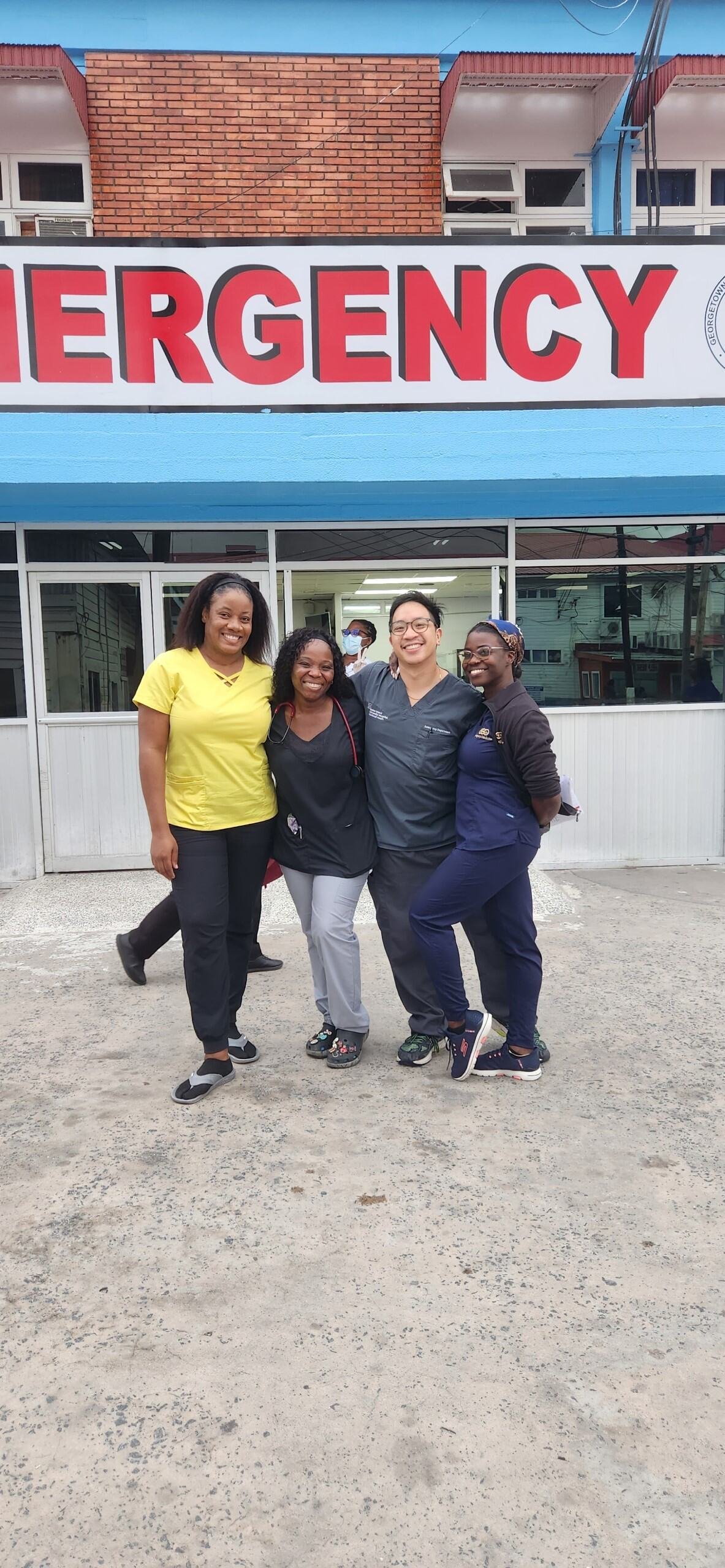Georgetown, Guyana
Georgetown, located on South America’s North Atlantic coast, is the capital of Guyana. Guyana is bordered by Suriname, Venezuela, and Brazil. A former British territory, it is the only English-speaking country on the South American continent.
The primary health care system in Georgetown is overburdened due to a limited health workforce and the rural distribution of the population. Public sector health services are free through the National Insurance Scheme, and the private sector operates on a fee-for-service basis. The main burdens of disease include noncommunicable diseases, maternal mortality and mental health.
Population: Est. 786,000 (as of July 2020)
Hospital: Georgetown Public Hospital Corporation
Rotation duration: 4 weeks
What does the rotation look like?
Residents work Monday through Friday 8am to 4pm alongside Guyanese emergency medicine trained physicians. Residents are responsible for seeing their own patients. In addition, they give one lecture in Guyana during the weekly conference. When they return they give a lecture at SIUH about what they have learned and share interesting stories and cases they saw during their rotation.
Survival guide (link)
Resident Experience: Tyler Ngheim
“Georgetown Public Hospital Corporation has lead the efforts in emergency medicine training and has shown me the importance of resource management and various tactics to maximize utilization. While working clinically, I had taken care of a patient who had a house fall on her in the Interior, located in the Amazon rainforest. She had presented 2 days after the initial accident without having any trauma-related interventions as facilities lack trauma stabilization capabilities. Despite minimal intervention, the patient was stable and found to have hemopneumothorax of the left chest with multiple rib fractures, and a femur fracture. Although the patient was stable, her care was delayed and this raised concern for more unstable patients that may decompensate from their injuries. Due to the remote nature of the Interior, trauma interventions were limited until she could get to Georgetown; although plain films and labs were performed to identify injuries. Development of trauma capabilities are limited due to infrastructure limitations and I hope to return to Guyana to help develop trauma systems to provide streamlined EMS and trauma patient care.”
Resident Experience: Kelly-Ann Mungroo
“My elective month in Guyana was a great experience. I worked in A&E five days a week, from 8am to 4pm, and saw patients of every acuity independently and with supervising doctors. Cases varied from chronic issues that had to be referred out to very sick, ICU-level patients. I felt comfortable taking care of these patients, often without the supervising doctor, except for when it came to utilizing A&E resources efficiently. The resources at GPHC, while a standard above most public hospitals per locals, were definitely not what I was used to at my Northwell hospital, and really shaped the way I approached nearly all my cases, even for not-sick patients who were being discharged without any workup. Working with the local population was my favorite part of the rotation. Being West Indian myself, I appreciated being able to serve this community and had a deep appreciation for the day-to-day struggles many faced. The majority of patients coming to the public hospital were low-income, and not very well educated. However, I noticed that the wants and needs were incredibly similar to the patients I see in New York, but often with a little Caribbean twist. Overall, I am very thankful to have experienced everything I did on this rotation.”








